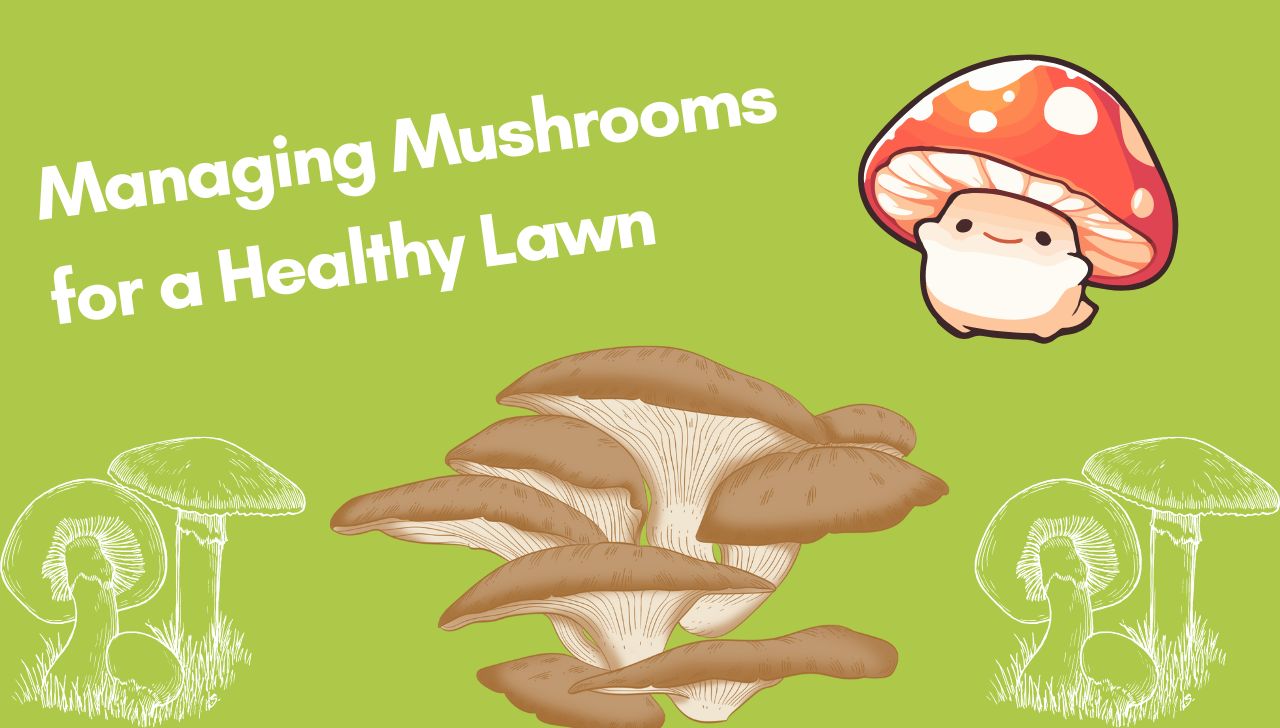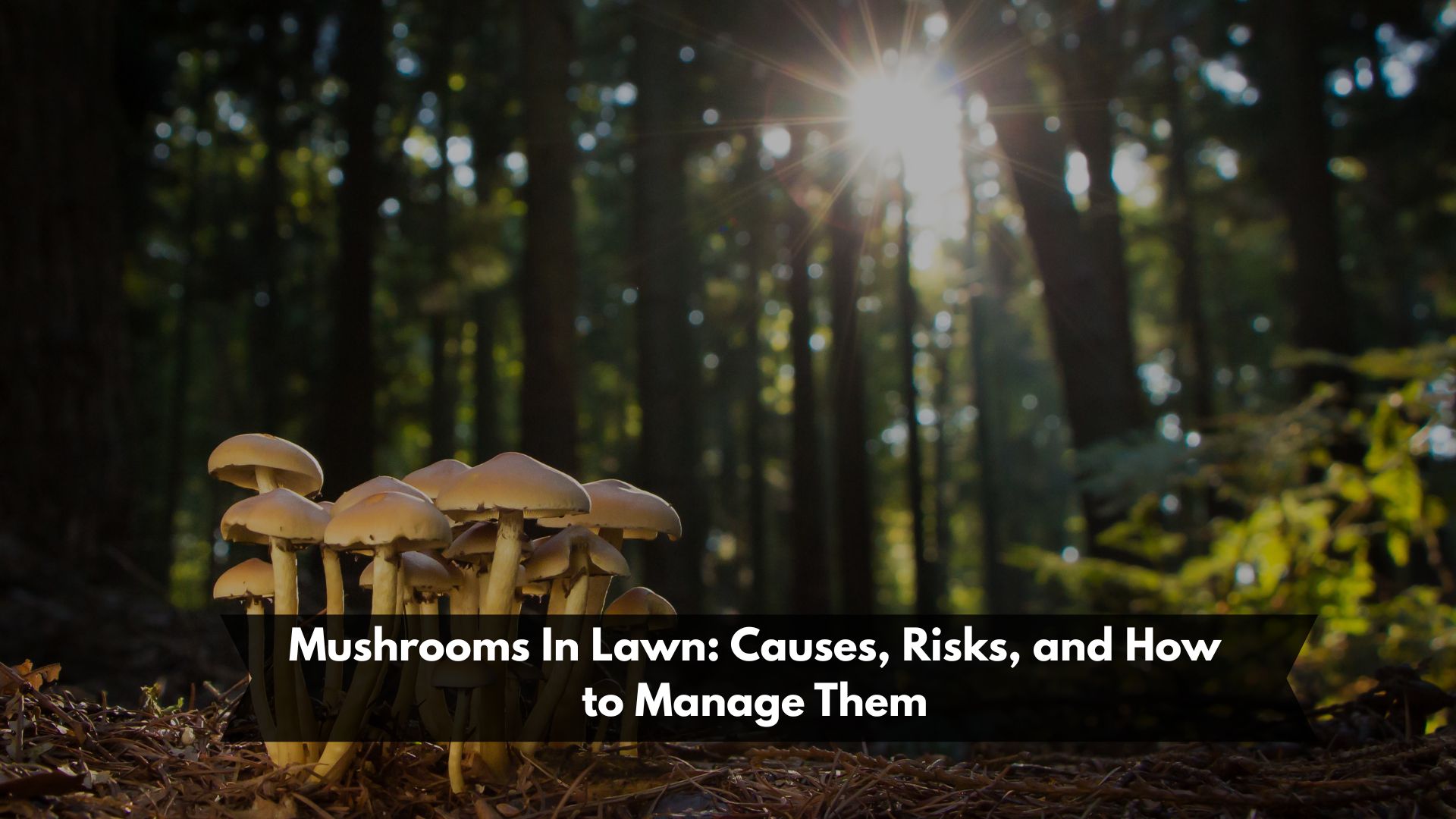Have you ever been out in your yard and noticed little clusters of mushrooms popping up seemingly overnight? They can be a bit surprising, right? One day, your lawn looks perfectly normal, and the next, those funny little fungi have claimed a patch or two. If you’re scratching your head wondering why mushrooms grow in lawns, whether they’re dangerous, or how to get rid of them, you’re not alone. Mushrooms in lawns are a pretty common sight, and while they may look a bit odd or even creepy, they tell us a story about what’s happening beneath the grass.
So, what’s really going on when mushrooms appear? Let’s take a closer look at why mushrooms pop up in your lawn, what kinds you might see, whether they pose any risks to your family or your grass, and how to keep them in check without losing your cool.
Why Do Mushrooms Grow in Lawns?
Here’s the thing about mushrooms: they’re not plants. They’re fungi, which means they live off decaying organic matter—think dead leaves, old roots, and wood buried under your soil. Your lawn is like a buffet for them if there’s plenty of that kind of stuff around. Mushrooms pop up as the fruiting bodies of fungi, kind of like apples growing on a tree. They’re the visible part of a much larger, hidden network underground called mycelium.
If your lawn mushrooms have appeared, it usually means there’s a rich supply of organic material they’re breaking down. Often, this happens in moist conditions—maybe after heavy rain or in shady spots where the soil stays damp. Lawns with poor drainage or lots of thatch (a layer of dead grass and roots) can be especially inviting. Sometimes, mushrooms indicate healthy soil life. It’s a bit ironic because while most people see mushrooms as a nuisance, they’re actually nature’s recyclers, turning old stuff into nutrients plants can use. But that doesn’t mean you want them popping up everywhere in your carefully manicured yard.
Common Types of Lawn Mushrooms
Not all mushrooms are created equal, and lawn mushrooms come in many shapes and sizes. Some you might recognize from fairy tale books or Halloween decorations—small, white, umbrella-shaped, or even brightly colored. Others blend right in with the grass, making them harder to spot until they’re fully grown.
Here are a few common types you might encounter:
- Fairy Ring Mushrooms: These often grow in circular patterns or rings and can sometimes cause a patch of grass to turn darker or die off in the center. The mushrooms themselves are usually small, brown, or tan.
- Puffballs: These look like little white balls or blobs. When mature, they release a puff of spores if you tap them.
- Ink Caps: These mushrooms have slender stems with caps that can dissolve into a black, ink-like substance.
- Stinkhorns: Odd and often smelly, stinkhorn mushrooms look strange and sometimes have a foul odor, attracting flies to help spread spores.
- Amanita species: Some of the more dangerous types, these can be brightly colored and often mistaken for edible mushrooms by mistake.
Identifying mushrooms can be tricky, and if you’re curious, there are plenty of guides and smartphone apps to help you figure out what’s growing in your yard. But don’t just pick and eat anything you find—more on that soon.
Are Mushrooms Harmful to Your Lawn or Family?
Here’s where things get a little complicated. Mushrooms themselves usually aren’t harmful to your lawn. They don’t feed on living grass but on the decaying organic matter underneath. Sometimes, though, the fungi responsible for the mushrooms can cause minor damage if they break down roots or buried wood near your lawn. Generally, though, mushrooms don’t mean your lawn is in trouble. They’re more like a symptom, a sign that there’s plenty of organic debris and moisture.
Now, what about your family? This is the big question, especially if you have kids or pets running around. Some mushrooms are toxic—and some are downright deadly. It’s hard to tell by looking, so it’s safest to assume that any wild mushrooms in your lawn are off-limits. Children and dogs are often curious, and they might pick or eat mushrooms without you knowing. That’s a risk you want to avoid. Even handling certain mushrooms can cause skin irritation in some people, though this is rare. The best practice? Remove mushrooms promptly and teach your family to steer clear.
How to Identify Edible vs. Toxic Lawn Mushrooms
You might be wondering if any of those mushrooms in your lawn are safe to eat. Honestly, unless you’re a trained mushroom forager or have a reliable expert with you, it’s best not to gamble. Some edible mushrooms look almost identical to poisonous ones.
If you want to identify mushrooms accurately, consider these tips:
- Get a guidebook or use a reputable app: There are many mushroom identification resources available that can help you match pictures and descriptions.
- Look at the shape, color, and gills: Details like whether the mushroom has gills or pores underneath the cap, the color of spores, and the presence of a ring on the stem can help distinguish species.
- Smell carefully: Some mushrooms have distinctive odors that can be a clue.
- Don’t rely on myths: Avoid old wives’ tales like “if animals eat it, it’s safe” or “if it peels easily, it’s edible”—these aren’t reliable.
If you’re serious about mushroom foraging, connect with a local mycological society. They often run classes and walks that teach safe identification.

Managing Mushrooms for a Healthy Lawn
Alright, so mushrooms are mostly harmless but a bit unwelcome in your tidy yard. What can you do to manage or prevent them?
- Improve drainage: Mushrooms love moisture, so fixing drainage problems or aerating your soil to reduce compaction can help.
- Reduce organic debris: Rake up leaves, grass clippings, and thatch regularly. Removing dead roots and buried wood if possible also limits their food supply.
- Mow regularly: Keeping your grass trimmed can reduce the shady, moist conditions mushrooms thrive in.
- Avoid overwatering: Water your lawn wisely. Too much moisture encourages fungi growth.
- Apply fungicide carefully: In some cases, fungicides can reduce mushrooms, but they usually only affect the fruiting bodies, not the underlying mycelium. This is often a short-term fix.
- Remove mushrooms manually: Pull or rake out mushrooms as soon as you see them to stop spores spreading.
Remember, mushrooms won’t ruin your lawn overnight. They’re more of a nuisance than a disaster. Sometimes, the best way to deal with them is a mix of good lawn care and patience.
Wrapping It Up
Mushrooms in lawns might be surprising at first, but they’re mostly nature doing its job—recycling organic matter. While they rarely harm your grass directly, they do signal moist, nutrient-rich conditions that fungi love. And yes, some can be toxic, so it’s smart to keep curious kids and pets away from them.
With some basic lawn care tweaks—think better drainage, less thatch, and careful watering—you can keep those fungal friends from overstaying their welcome. And if you want to explore the fascinating world of mushrooms a bit more, why not reach out to local experts? There’s a whole underground network of fungi science waiting to be uncovered—literally. So next time you spot a patch of mushrooms in your yard, you’ll know what’s going on beneath the surface—and maybe even appreciate these odd little visitors a bit more. But just remember: when it comes to eating wild mushrooms, if in doubt, throw it out!

